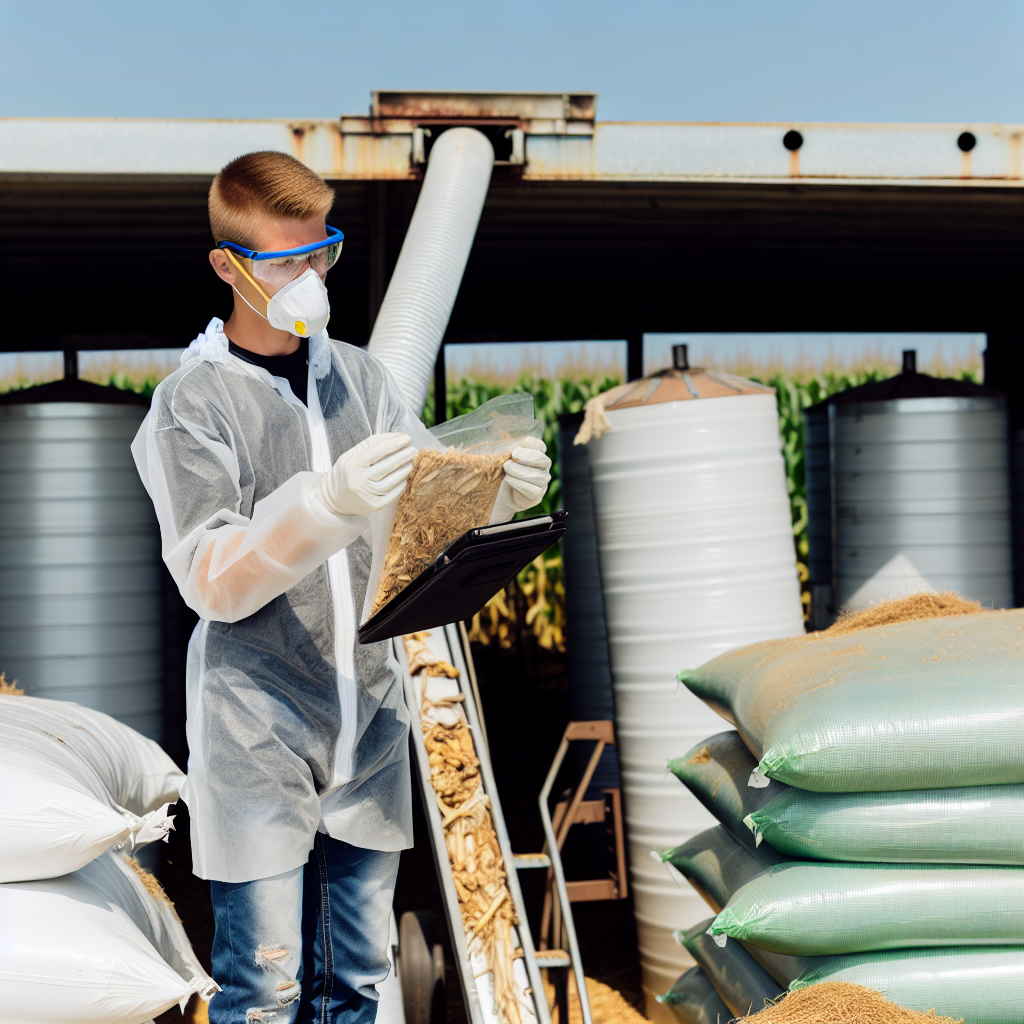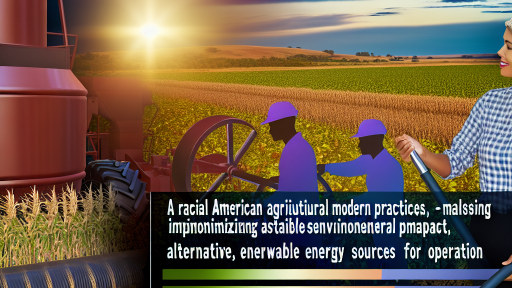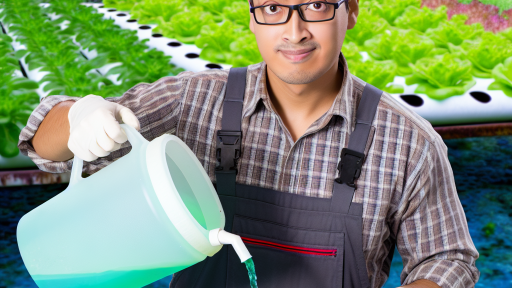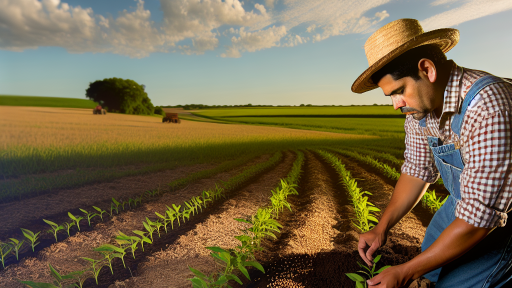Introduction to Post-Harvest Management and its Importance
Post-harvest management plays a crucial role in the agricultural industry.
This process involves the handling of crops after harvesting.
Effective post-harvest practices enhance the quality of produce.
They also help in minimizing losses and maximizing profits.
Understanding post-harvest management is vital for farmers.
Moreover, it ensures that consumers receive fresh and safe food.
The significance of post-harvest management cannot be overstated.
First, it reduces spoilage and waste in the supply chain.
Second, it contributes to food security on a global scale.
Additionally, effective practices can increase market value.
After harvesting, crops face various challenges.
For instance, they can suffer from pests and diseases.
Environmental conditions also affect their longevity and quality.
Thus, implementing technology can facilitate better management.
Technological advancements offer innovative solutions.
Transform Your Agribusiness
Unlock your farm's potential with expert advice tailored to your needs. Get actionable steps that drive real results.
Get StartedThese include improved storage facilities and transportation methods.
Moreover, technology assists in monitoring and maintaining quality.
Ultimately, investing in post-harvest management is wise.
This investment ensures sustainable agricultural practices.
Proper post-harvest management safeguards both producers and consumers.
Overview of Technological Advances in Agriculture
The Role of Technology in Agriculture
Technology plays a crucial role in modern agriculture.
Farmers leverage technology to improve crop yield and efficiency.
As a result, they enjoy better returns on their investments.
Additionally, technology helps reduce labor costs significantly.
Precision Agriculture
Precision agriculture optimizes field-level management.
It uses GPS and IoT devices for data collection.
This technology allows farmers to monitor conditions in real-time.
Farmers can apply resources more efficiently and selectively.
Consequently, they minimize waste and enhance profitability.
Post-Harvest Management Technologies
Post-harvest management technologies are essential for quality maintenance.
Advanced storage solutions prevent spoilage and waste.
Temperature and humidity controls are crucial in this process.
These systems keep produce fresh for longer periods.
Moreover, smart packaging technologies enhance product safety.
Data Analytics and Big Data
Data analytics play a significant role in agricultural decision-making.
Farmers utilize big data to analyze market trends and crop performance.
This analysis leads to informed planting and selling decisions.
Furthermore, predictive analytics helps anticipate climate impacts.
Through these insights, farmers can adjust their practices proactively.
Showcase Your Farming Business
Publish your professional farming services profile on our blog for a one-time fee of $200 and reach a dedicated audience of farmers and agribusiness owners.
Publish Your ProfileAutomated and Robotics in Farming
Automation and robotics simplify many farming operations.
Robotic systems handle tasks such as planting and harvesting.
This technology boosts efficiency while reducing manual labor.
Consequently, farmers can focus on strategic activities.
Moreover, automation minimizes human error in the field.
Innovative Breeding Techniques
Innovative breeding techniques enhance crop resilience.
Genetic modification allows scientists to create superior varieties.
These crops often require fewer resources and resist pests better.
Furthermore, biotechnology accelerates the breeding process.
As a result, farmers can access improved varieties faster.
Digital Tools for Monitoring Crop Quality and Storage Conditions
Introduction to Digital Tools
Digital tools are revolutionizing post-harvest management.
They enhance the monitoring of crop quality and storage conditions.
Moreover, these tools help farmers make informed decisions.
Types of Digital Tools
Various digital tools exist to aid in crop monitoring.
Some popular types include sensors, apps, and drones.
Additionally, each tool has unique functions and benefits.
Sensors for Real-Time Monitoring
Sensors play a crucial role in real-time monitoring.
They collect data on temperature, humidity, and more.
Farmers access this data remotely via smartphones.
Mobile Applications
Mobile applications simplify the monitoring process.
They allow users to track crop conditions across various locations.
Furthermore, apps often include reminders for key activities.
Drones for Aerial Surveillance
Drones offer innovative aerial surveillance capabilities.
They can cover large areas quickly and efficiently.
Additionally, drones provide high-resolution images of crops.
This imagery assists in identifying issues early.
Benefits of Implementing Digital Tools
Implementing digital tools yields numerous benefits.
They improve efficiency in post-harvest processes.
Consequently, farmers reduce waste and maximize profit margins.
Moreover, accurate data helps in better decision-making.
Increased Efficiency
Digital tools streamline monitoring activities.
As a result, farmers can focus on critical tasks.
Better Quality Control
These tools enhance overall crop quality control.
Farmers can quickly address potential issues in storage.
Cost Savings
Finally, digital tools contribute to significant cost savings.
They minimize losses due to spoilage or pest infestations.
Thus, farmers see a higher return on their investments.
You Might Also Like: Preventing Soil Erosion in Organic Farming Systems
Role of IoT Devices in Real-Time Data Collection for Post-Harvest Management
Introduction to IoT in Agriculture
The Internet of Things (IoT) revolutionizes agricultural practices globally.
Farmers increasingly depend on IoT devices for better data collection.
Showcase Your Farming Business
Publish your professional farming services profile on our blog for a one-time fee of $200 and reach a dedicated audience of farmers and agribusiness owners.
Publish Your ProfileThese devices help monitor crops and manage resources efficiently.
Benefits of Real-Time Data Collection
Real-time data collection enhances decision-making in post-harvest management.
It allows farmers to react quickly to changing conditions.
Consequently, this leads to reduced losses and improved product quality.
Types of IoT Devices Used
Various IoT devices serve specific purposes in post-harvest management.
- Sensors monitor temperature and humidity levels.
- Cameras track crop health and maturity.
- GPS devices help in tracking transport and logistics.
Implementation of IoT Solutions
Implementing IoT solutions requires careful planning and execution.
Farmers should assess their needs to choose suitable devices.
Additionally, they must ensure proper network infrastructure is in place.
Case Studies of Successful IoT Use
Several companies have successfully integrated IoT into their operations.
For instance, Agri-Tech Innovations uses sensors to reduce spoilage rates.
Similarly, FreshProduce Co. utilizes real-time data to improve supply chain efficiency.
Future Trends in IoT for Agriculture
The future will see advancements in AI integration with IoT devices.
Furthermore, improved machine learning algorithms will enhance data analysis.
This evolution will lead to more predictive analytics in agriculture.
You Might Also Like: Choosing the Best Mulch Materials for Your Farm
Utilizing AI and Machine Learning for Predictive Analytics in Post-Harvest Processes
Introduction to Predictive Analytics
Predictive analytics leverages data to forecast outcomes effectively.
It uses statistical algorithms and machine learning techniques.
Farmers can enhance post-harvest processes with accurate predictions.
The Role of AI in Post-Harvest Management
AI technology plays a crucial role in decision-making processes.
It helps identify trends and potential risks in post-harvest handling.
Such insights can significantly improve efficiency and reduce waste.
Data Collection Methods
Collecting relevant data is vital for effective analytics.
Various methods can be employed for data gathering.
- IoT sensors can monitor environmental conditions directly.
- Mobile applications allow for real-time data input by farmers.
- Drones can assess crop health and post-harvest quality.
Machine Learning Algorithms
Machine learning algorithms analyze complex datasets efficiently.
Several algorithms can be beneficial in post-harvest contexts.
- Regression models can predict shelf life and spoilage rates.
- Classification algorithms can categorize crops based on quality.
- Clustering techniques can identify patterns in storage conditions.
Case Studies and Real-World Applications
Successful implementation of AI and machine learning is evident globally.
In Asia, farmers use AI to optimize harvest timings.
This approach increases yield while reducing losses dramatically.
In North America, predictive analytics helps manage inventory better.
This results in decreased food waste and improved profitability.
Challenges and Considerations
Despite the benefits, challenges exist in adopting these technologies.
Data privacy and security concerns must be addressed proactively.
Additionally, farmers need training to leverage these tools effectively.
Investment in technology can also be a barrier for many.
Future Trends in Post-Harvest Analytics
The future of post-harvest management looks promising with AI.
Integration of blockchain technology can enhance traceability.
Furthermore, continued advancements in machine learning will provide better insights.
Farming practices will evolve, leading to more sustainable food systems.
Learn More: Mulching Strategies for Superior Weed Control

Case Studies of Successful Implementation of Technology in Post-Harvest Management
Smart Storage Solutions
Innovations in storage technology significantly boost crop preservation.
Showcase Your Farming Business
Publish your professional farming services profile on our blog for a one-time fee of $200 and reach a dedicated audience of farmers and agribusiness owners.
Publish Your ProfileThe CoolBot system exemplifies this innovation, enabling farmers to create walk-in coolers.
This technology regulates temperature efficiently, prolonging the shelf life of perishable goods.
A case study in Mexico showed a 40% reduction in spoilage using CoolBot.
Farmers reported increased profits due to reduced loss of harvest.
Data-Driven Decision Making
Data analytics enhances post-harvest management strategies effectively.
Agricultural analytics platforms offer insights into optimal harvest times.
For instance, AgroStar in India helps farmers make informed decisions.
This platform utilizes weather forecasts to advise on harvest and storage times.
Farmers using such resources increased their yields by 30% on average.
Automated Packaging Systems
Automation in packaging streamlines post-harvest processes efficiently.
A notable example is the use of robotic packaging lines in fruit packing.
Fruits are packaged quickly, reducing labor costs and time requirements.
A company in California reported a 50% increase in packaging speed.
Consequently, they could meet higher market demands without sacrificing quality.
Blockchain for Traceability
Blockchain technology introduces transparency to the supply chain.
This technology allows consumers to trace the origin of their food items seamlessly.
Farmers in Kenya have adopted blockchain to prove the authenticity of organic products.
As a result, consumer trust in their produce has significantly improved.
Furthermore, this transparency has opened new market avenues for these farmers.
Mobile Applications for Farmers
Mobile technology empowers farmers to manage their post-harvest tasks effectively.
Applications like FarmLogs provide timely information on weather and prices.
A study of smallholder farmers in Ghana demonstrated substantial benefits from these apps.
Farmers reported enhanced decision-making abilities and improved market access.
This shift resulted in a noticeable increase in their income levels.
Delve into the Subject: Effective Soil Testing Methods for Farmers
plaintextChallenges and Limitations of Technology Adoption in Post-Harvest Practices
High Initial Costs
Investing in new technologies often presents high initial costs for farmers.
This financial burden can deter small-scale farmers from adopting innovations.
Consequently, many rely on traditional methods, which may be less efficient.
Insufficient Infrastructure
Rural areas often lack the necessary infrastructure to support technological advancements.
Inadequate access to power and water complicates the use of modern equipment.
Furthermore, poor transportation affects the timely distribution of harvested goods.
Lack of Training and Knowledge
Farmers frequently face challenges in understanding complex technologies.
Without proper training, the benefits of new tools remain untapped.
Moreover, limited access to educational resources hinders skill development.
Resistance to Change
Many farmers exhibit a reluctance to change their established practices.
This resistance often stems from a lack of awareness about technology’s benefits.
As a result, innovation adoption remains slow in some communities.
Dependence on External Support
Often, farmers rely on external support for technology implementation.
This dependence can create vulnerabilities during economic downturns.
In addition, inconsistent support from NGOs and government initiatives impedes sustainability.
Showcase Your Farming Business
Publish your professional farming services profile on our blog for a one-time fee of $200 and reach a dedicated audience of farmers and agribusiness owners.
Publish Your ProfileData Privacy Concerns
Farmers may have valid concerns about data privacy when using digital tools.
Many fear that their information might be exploited by corporations.
This apprehension can hinder the adoption of beneficial digital agricultural solutions.
Environmental Impact
Some technologies may inadvertently create negative environmental impacts.
For instance, over-reliance on certain machines can degrade soil health.
As a result, farmers must carefully consider the sustainability of new practices.
Future Trends in Technology and Innovations for Post-Harvest Management
Emerging Technologies Transforming Storage Solutions
Advanced sensor technologies are enhancing storage conditions for crops.
These sensors monitor temperature and humidity in real-time.
Farmers can receive alerts, ensuring optimal conditions are maintained.
Moreover, data analytics tools help in predicting storage needs accurately.
Automation in Post-Harvest Operations
Automation is revolutionizing sorting and packaging processes.
Robotic systems efficiently sort and package produce with speed.
This reduces human error and increases overall efficiency.
Consequently, farmers can focus on other critical tasks.
Smart Supply Chain Logistics
Innovative logistics solutions are streamlining transportation of goods.
Tracking systems provide real-time updates on shipment status.
With such information, stakeholders can make timely decisions.
This technology minimizes spoilage during transportation.
Blockchain for Transparency and Traceability
Blockchain technology ensures transparency in the supply chain.
This innovation allows stakeholders to trace the journey of products.
Consumers benefit from knowing the origin and handling of produce.
Thus, blockchain builds trust within the food supply network.
Waste Reduction Strategies
Digital platforms help in identifying surplus produce for redistribution.
By connecting farmers with food banks, waste can significantly decrease.
Furthermore, technology aids in optimizing the use of resources.
This reduces the overall environmental impact of food production.
Thus, technology aligns profit with environmental sustainability.
Investment in Research and Development
Research institutions are developing innovative post-harvest techniques.
This ongoing research focuses on improving crop preservation methods.
Emerging tools are designed to extend the shelf life of perishable items.
Investments in this area promise to enhance food security for all.
Additional Resources
Sustainable Postharvest Management Practices | Sustainable …




